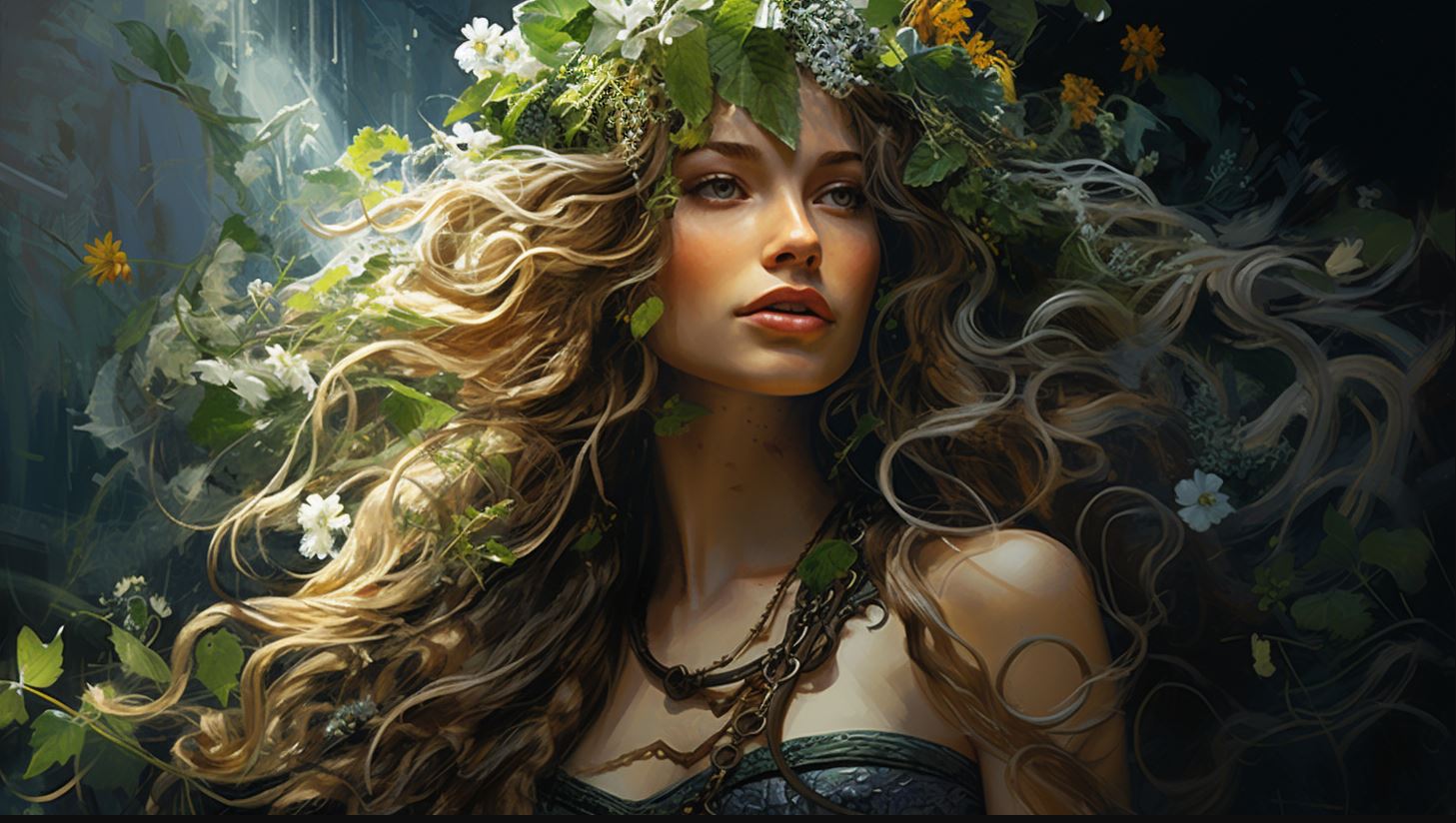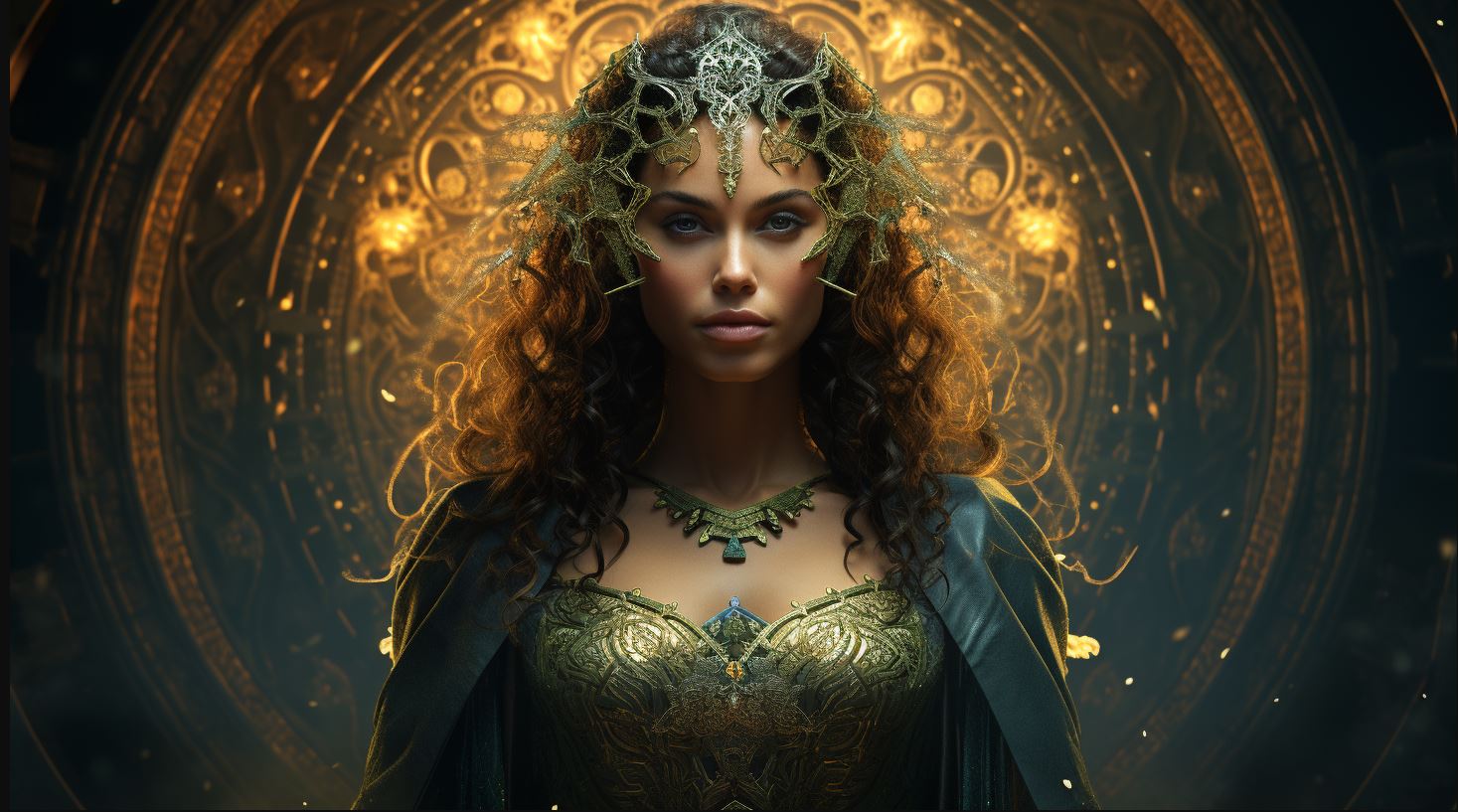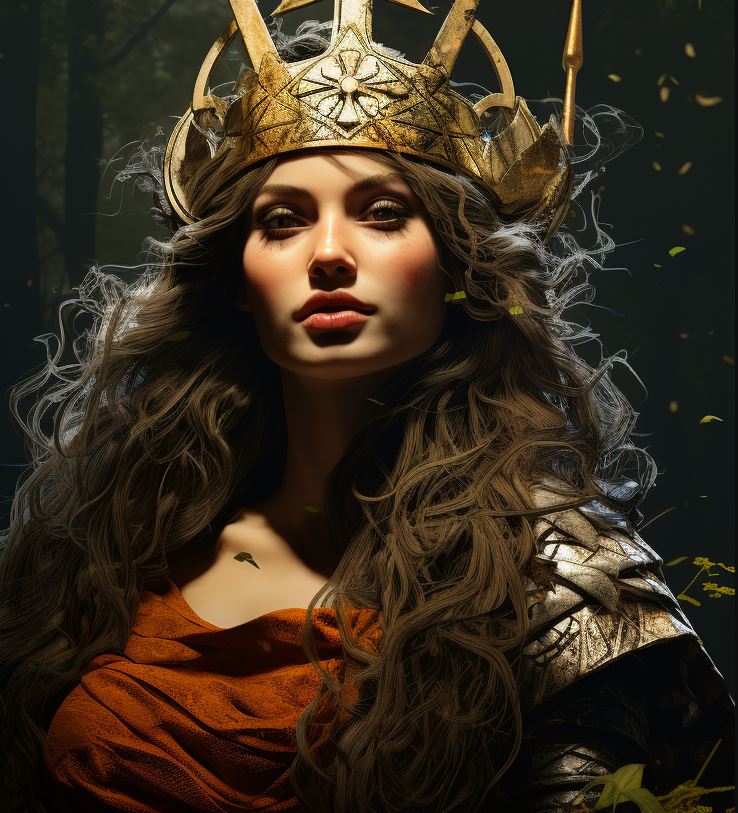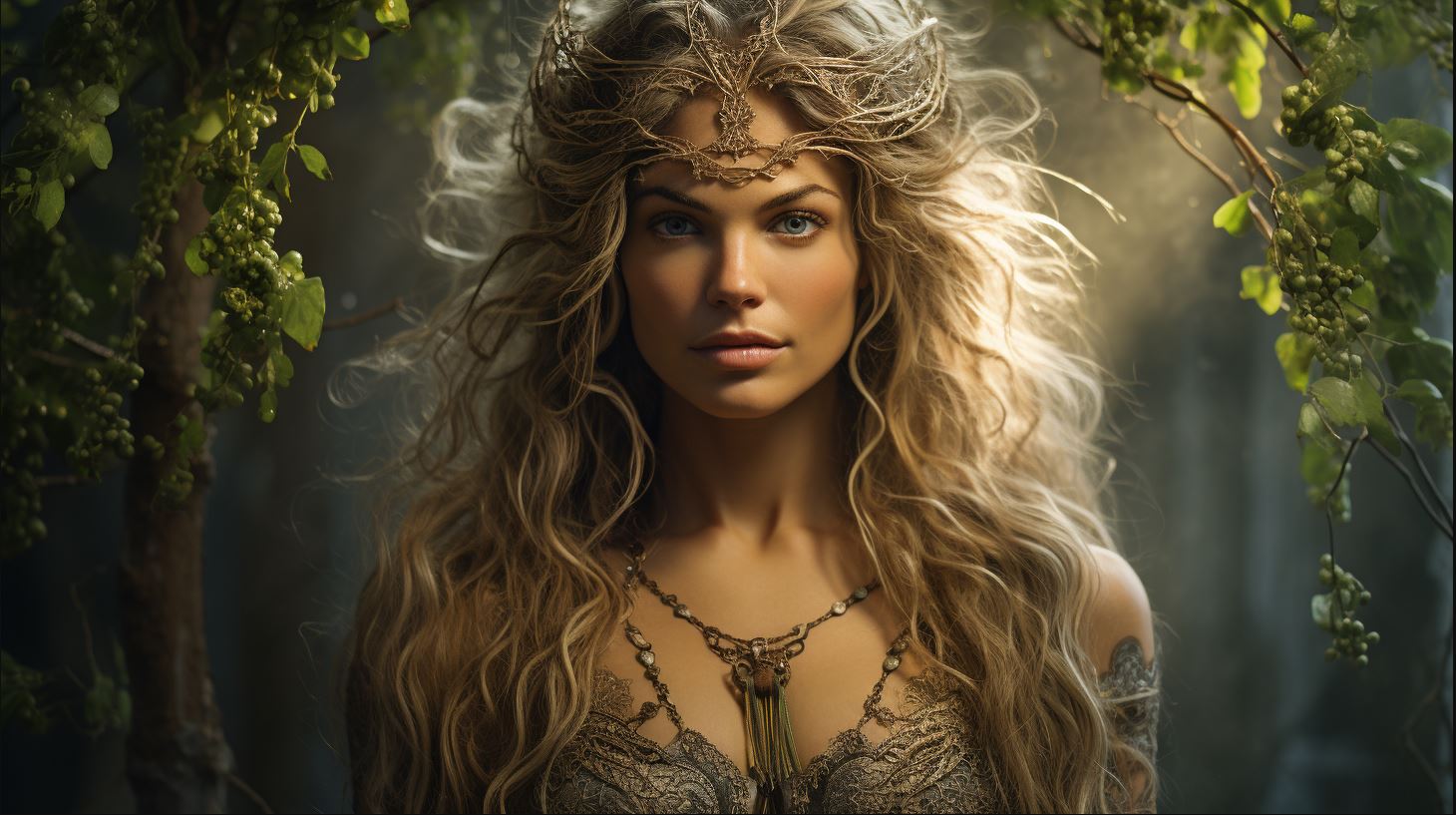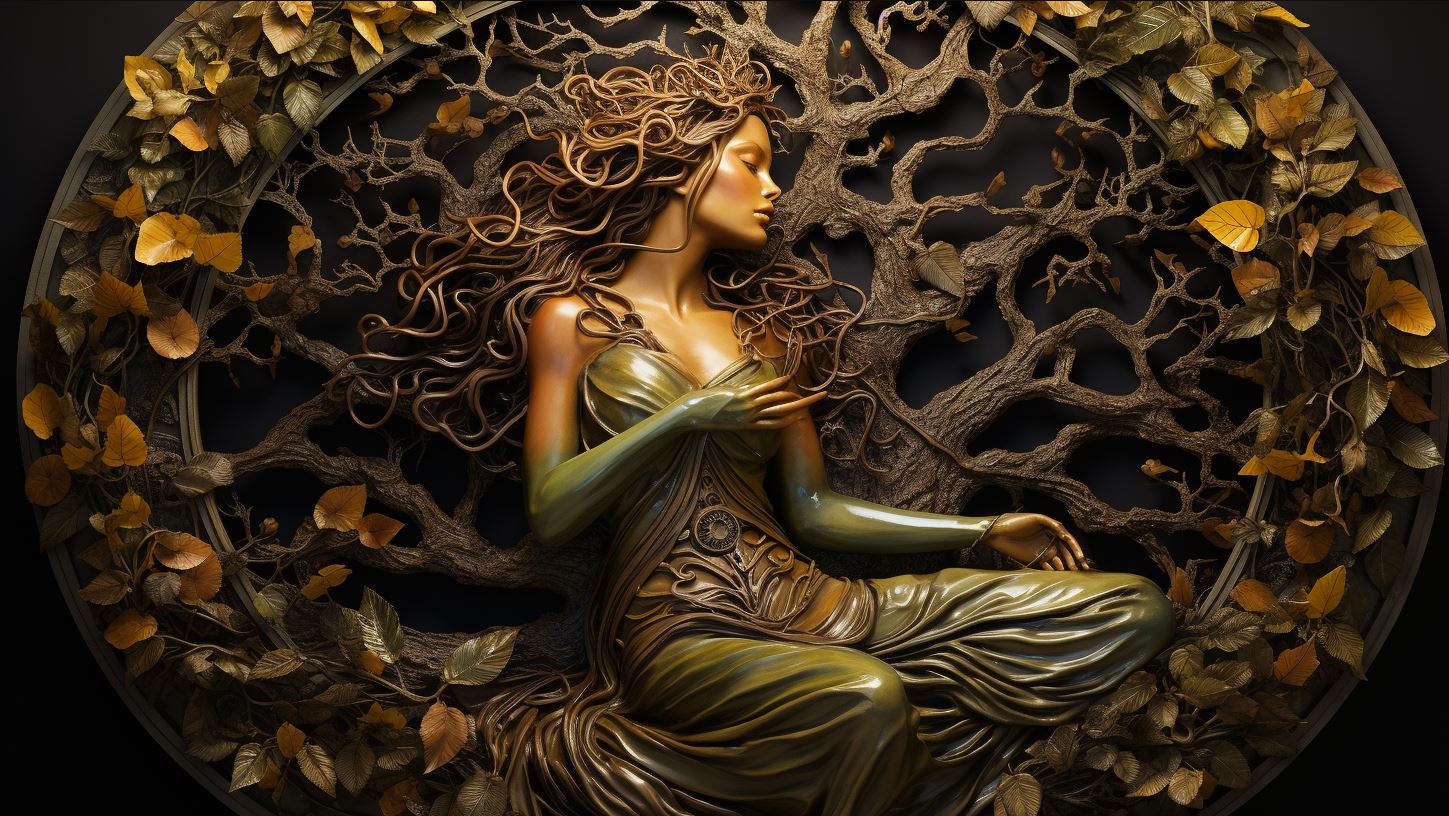Aine Celtic Goddess: Exploring the Rich Mythology of the Irish Summer Deity
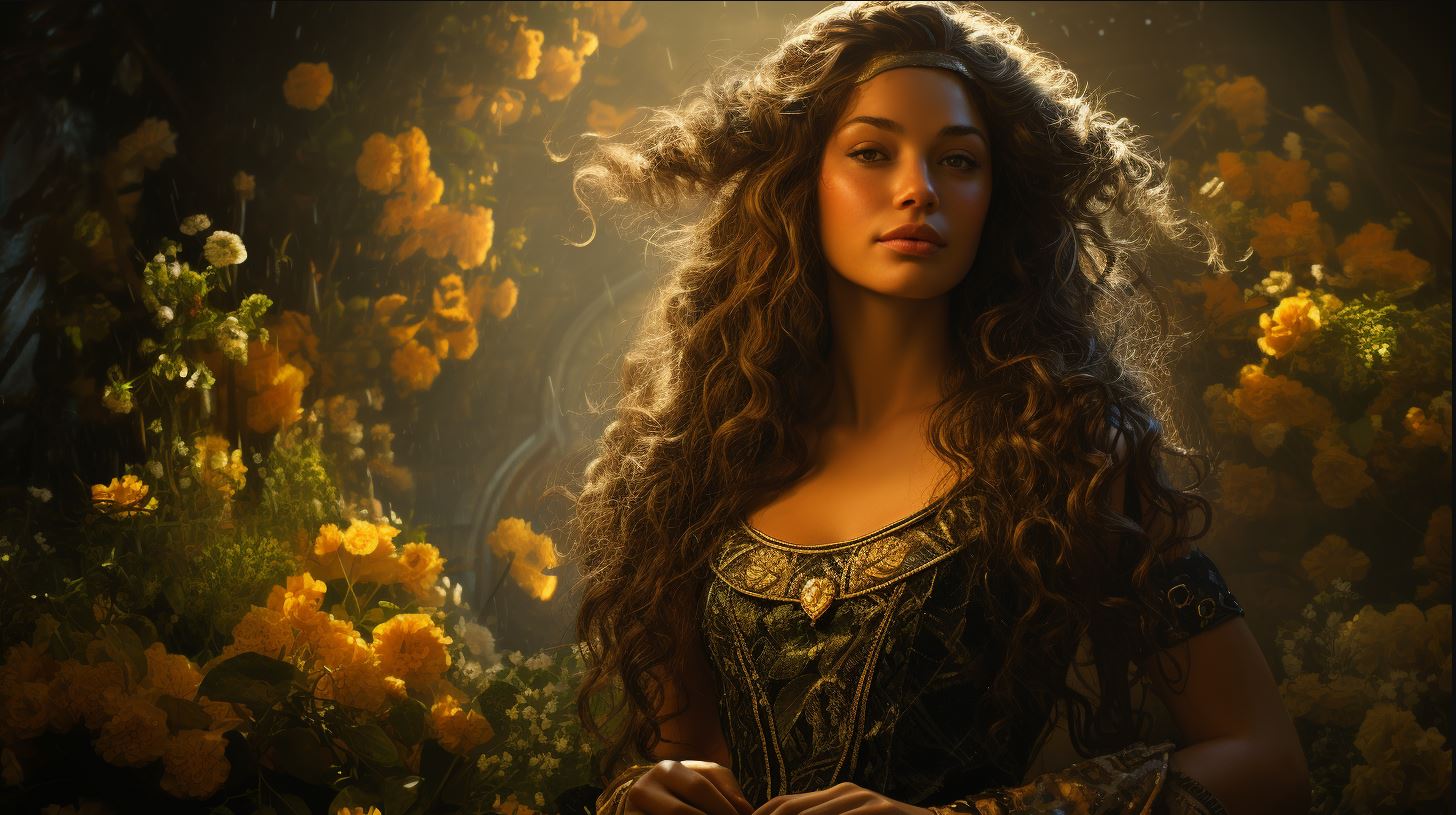
Aine Celtic Goddess is a prominent figure in Irish mythology, representing summer, wealth, and sovereignty. Associated with the sun and the summer solstice, Aine is often depicted as a red mare.
With her powers over fertility and agriculture, she holds influence over crops and animals. Aine’s significance is strongly tied to County Limerick, particularly at Knockainey Hill where rituals were held in her honor.
Other locations linked to her presence include Toberanna, Dunany, Lissan, and Cnoc Aine. Additionally, Aine’s relationships with figures like Ailill Aulom and Gerald FitzGerald have shaped various stories and legends.
Aine Celtic Goddess in Irish Mythology
Welcome to the fascinating world of Aine Celtic Goddess, a prominent figure in Irish mythology.
Let’s delve into her origins, associations, symbolism, and powers that make her a captivating and significant deity.
The Origins of Aine
Believed to have ancient roots, Aine Celtic Goddess emerged from the rich mythological tapestry of Ireland. Her lineage traces back to Egobail, her father, and she is the sister of Aillen and/or Fennen.
Notable for her connections with many Irish families, Aine holds ancestral ties that have endured through generations.
Aine’s Associations with Summer and Sovereignty
Aine Celtic Goddess is closely associated with the summer season and is considered a symbol of wealth and sovereignty. As a deity of the sun and the solstice of summer, she embodies the vibrant energy and abundance that comes with the warmest months of the year.
Her presence signifies prosperity and the natural cycles of growth and abundance in the land.
The Symbolism of Aine as a Red Mare
A striking aspect of Aine’s portrayal is her representation as a red mare. This symbolizes her connection to fertility, power, and transformation. The red mare imagery signifies vitality, courage, and freedom, reflecting the goddess’s attributes and influence.
Aine’s Powers Over Fertility and Agriculture
Aine Celtic Goddess holds dominion over crops, animals, and agriculture, reinforcing her role as a fertility goddess. Her powers extend to ensuring bountiful harvests, the well-being of livestock, and the general prosperity of the people.
She is revered for her ability to nurture and sustain life through her association with the earth’s abundance.
Aine’s Presence in County Limerick and Other Locations
Aine Celtic Goddess holds a strong presence in County Limerick and several other sacred locations in Ireland. These sites are deeply associated with her worship, rituals, and legends that have been passed down through generations.
Rituals and Legends at Knockainey Hill, County Limerick
Knockainey Hill, situated within County Limerick, holds significant importance in the reverence of Aine. This majestic hill was a central gathering place where ancient rituals and ceremonies were conducted in honor of the Celtic Goddess.
It served as a sacred space to pay tribute to Aine’s powers of prosperity, abundance, and sovereignty.
The legends centered around Knockainey Hill further enhance Aine’s mystique. Stories portray the hill as a portal between the earthly and divine realms, where mortals could connect with the goddess and seek her blessings.
These tales have become an integral part of local folklore and continue to inspire awe and fascination among locals and visitors alike.
Toberanna, Dunany, Lissan, and Cnoc Aine: Other Sacred Sites
Aine’s presence extends beyond County Limerick to other revered locations across Ireland.
Toberanna in County Tyrone, Dunany in County Louth, Lissan in County Londonderry, and Cnoc Aine near Teelin in County Donegal all hold deep connections to the Celtic Goddess.
Toberanna, known for its ancient holy well, is believed to possess healing properties associated with Aine’s fertility and abundance.
Dunany, with its mystical landscapes, is associated with Aine’s role as a protector of the land and its bountiful offerings. Lissan, surrounded by lush greenery, represents Aine’s association with nature and agricultural prosperity.
Cnoc Aine, nestled near Teelin, is considered a sacred site where the goddess’s energies are believed to be particularly potent, attracting pilgrims seeking blessings.
These locations serve as reminders of Aine’s enduring presence, attracting those interested in exploring the rich tapestry of Irish mythology and connecting with the ancient roots of Celtic spirituality.
Aine’s Relationships and Descendants
Within Irish mythology, Aine, the Celtic goddess, is entangled in various intriguing relationships and ancestral claims. Let’s delve into the stories behind Aine’s connections and the descendants who trace their lineage back to her.
Aine and the Story of Ailill Aulom
In one captivating tale, Aine finds herself entwined with the King of Munster, Ailill Aulom. It is said that Ailill violated Aine, resulting in a disturbing act of retribution. Aine, in her wrath, tore off Ailill’s ear.
This act had significant consequences, as Irish law dictated that only someone without any physical imperfections could rule. By mutilating Ailill, Aine forever rendered him ineligible to be king. The descendants of Ailill, known as the Eóganachta, proudly claim their heritage is intertwined with that of Aine herself.
Aine and Gerald FitzGerald, Earl of Desmond
Another tale unveils Aine’s relationship with Gerald FitzGerald, the Earl of Desmond. It is whispered that Gerald committed a heinous act against Aine, violating her in some way. Seeking justice or vengeance, Aine either transforms him into a goose or causes his demise.
The FitzGerald dynasty proudly boasts their lineage as descendants of the great Celtic goddess, emphasizing their deep connection with Irish heritage.
The Eóganachta Claim of Descent from Aine
Intriguingly, the Eóganachta lineage, descendants of Ailill Aulom, staunchly proclaims their direct descent from Aine herself. These descendants firmly believe in the bloodline connection, proudly carrying the ancient traditions and stories associated with their legendary ancestor.
These intricate relationships and claims of descent weave a rich tapestry, establishing Aine as a pivotal figure in the Irish mythological landscape. It is through these connections that the legacy of the Celtic goddess is imprinted within the realms of both history and folklore.
Aine in Folklore and Popular Tales
Aine Celtic Goddess has become a central figure in various folklore and popular tales, showcasing her power and intriguing nature. Let’s explore some of these fascinating stories:
Aine’s Warning to Her Daughters
According to local legends in County Limerick, Aine had two daughters whom she cautioned against marriage.
However, one of them disregarded her mother’s advice and married against her wishes. The consequences of this disobedience remain shrouded in mystery, but it highlights Aine’s role as a protective and authoritative deity.
Other Folklore Tales Involving Aine
Besides her warning to her daughters, Aine’s presence permeates a multitude of other folklore tales. While each story may feature distinct elements and characters, they all celebrate the goddess’s connection to nature, fertility, and the land.
These tales often depict Aine as a benevolent and powerful figure, embodying the essence of Irish mythology.
One popular story tells of Aine’s ability to shape-shift into a beautiful swan, captivating those who encounter her melodious song.
Another tale describes her interactions with humble farmers, granting them bountiful harvests and prosperity in return for their devotion and respect.
Through these folklore tales, Aine’s significance as a deity associated with fertility, abundance, and the cycle of life becomes intricately woven into the fabric of Irish culture and heritage.
Aine: An Irish Goddess of Wealth and Sovereignty
Aine, the Celtic goddess, holds a significant role in Irish mythology and culture. Her association with wealth and sovereignty makes her a powerful and revered figure in Irish folklore. Let’s explore the symbolic connection between Aine and Irish summer, as well as her influence on crops, animals, and the earth.
Aine’s Role in Irish Mythology and Culture
Aine plays a crucial role in Irish mythology as a symbol of wealth and sovereignty. She represents the abundance and prosperity that comes with the summer season. As a goddess of the sun, Aine brings warmth, light, and fertility to the land.
Her presence is deeply ingrained in Irish culture, where she is regarded as a guardian and bestower of prosperity.
The Symbolic Connection Between Aine and Irish Summer
Aine’s association with Irish summer holds profound symbolism. The summer season in Ireland is a time of lush growth, bountiful harvests, and vibrant energy. Just as the sun shines brightly during this time, Aine’s presence brings forth the abundance and rich blessings of the land.
She symbolizes the life-giving power of the sun and the renewal that comes with the changing seasons.
Influence of the cultives
Aine’s influence extends to the realm of agriculture. She holds sway over crops, ensuring their growth and fertility. Farmers would seek her favor and offer prayers and rituals to ensure a bountiful harvest.
Aine’s connection to the earth and its cycles grants her the power to nurture and nourish the land, ensuring sustenance for the people.
Influence on earth and animals
Not only does Aine govern the growth of crops, but she also has control over animals and the earth itself. She protects livestock and ensures their well-being, guiding their reproduction and ensuring their abundance.
Additionally, Aine’s influence extends to the land, safeguarding its fertility and promoting harmony between nature and humanity.
Aine’ Influence on Crops, Animals, and the Earth
Aine’s influence is felt deeply in the realms of agriculture, animal husbandry, and the overall balance of nature. Her role as a goddess of wealth and sovereignty manifests in the prosperity and abundance bestowed upon those who worship and honor her.
From ensuring bountiful harvests to supporting the growth and well-being of animals, Aine’s powerful presence is felt throughout the natural world.
In conclusion, Aine, the Irish goddess of wealth and sovereignty, holds a significant role in Irish mythology and culture.
Her symbolic connection to Irish summer represents abundance, while her influence over crops, animals, and the earth ensures prosperity and harmony. She embodies the essence of generosity and fertility, blessing the land and its inhabitants with her divine power.
.











